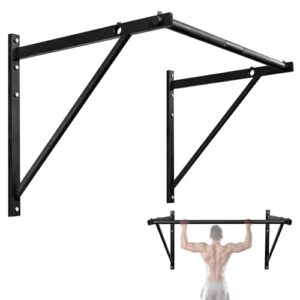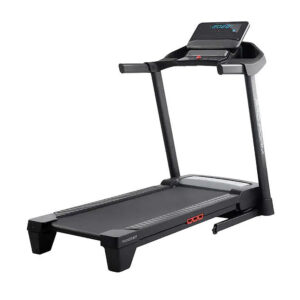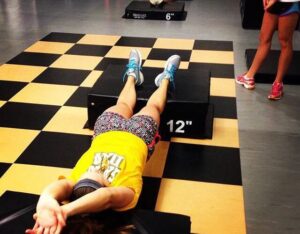Strength training is a key component for enhancing overall health and maintaining independence for women over 60. It helps to build muscle strength, increase bone density, and improve balance.
As women age, engaging in regular strength training becomes increasingly vital for promoting physical well-being and functionality. After the age of 60, women face unique health challenges such as a natural decrease in bone density and muscle mass, which can impact their daily lives and increase the risk of falls and fractures.
Incorporating strength exercises into their fitness routine can counter these effects by fortifying muscles and bones, aiding in the prevention of osteoporosis, and fostering stability. A tailored strength training program for this demographic should focus on safety, gradual progression, and consistency. With the right approach, strength training is a powerful tool for women over 60 to boost energy levels, enhance mobility, and lead a more active and healthy lifestyle.

Credit: spotifyanchor-web.app.link
Breaking The Age Barrier In Fitness
Who says age should limit fitness goals? Women over 60 are redefining strength training and its boundaries. Gone are the days where age dictates ability, and these trailblazing women are proof that the gym is a place for all generations. Let’s debunk common misconceptions and celebrate the victories that come with age and dedication!
Common Myths About Older Women And Exercise
Fitness myths can discourage many from even trying. But knowledge is power, and it’s time to empower women with the truth.
- Myth: Strength training is risky for older women.
- Fact: With proper guidance, it’s safe and beneficial!
- Myth: Age means you can’t gain muscle.
- Fact: Women over 60 can still build strength and muscle mass.
- Myth: Exercise doesn’t impact bone health significantly.
- Fact: Regular exercise actually improves bone density.
Inspirational Success Stories
Stunning victories from everyday women inspire and drive others to break their own barriers.
| Name | Age | Achievement |
|---|---|---|
| Linda | 63 | Completed a triathlon |
| Mary | 65 | Deadlifted her body weight |
| Patricia | 68 | Joined a senior powerlifting competition |
The Importance Of Muscle Mass After 60
For women over 60, strength training is not just a routine; it’s essential for vibrant health. Maintaining muscle mass is critical as it supports a robust metabolism, strengthens bones, and enhances mobility. Life after 60 can be dynamic and full of activity, thanks to the vital role muscle plays.
Health Benefits Of Maintaining Muscle
Muscle isn’t just about strength; it’s about maintaining a quality of life. Strong muscles lead to improved balance, reducing the risk of falls. They also protect joints from injury by providing better support. Here’s a quick look at the top benefits:
- Boosts Bone Density: Combats osteoporosis
- Enhances Balance: Prevents falls
- Improves Joint Health: Eases arthritis symptoms
How Muscle Mass Affects Metabolism
Muscle tissue is more metabolically active than fat. This means women over 60 with more muscle burn more calories, even at rest.
| Body Composition | Calories Burned at Rest |
|---|---|
| More Muscle Mass | Higher Rate |
| More Fat Mass | Lower Rate |
Building muscle can transform your metabolism, making it easier to manage weight and maintain energy levels throughout the day.
Beginning A Strength Training Routine
Welcome to the empowering world of strength training for women over 60! Embracing a strength training routine at this stage of life is not just about maintaining muscle mass. It is about boosting independence, improving balance, and enhancing overall well-being. Starting a new fitness journey can be thrilling yet intimidating, but with the right approach, it can also be safe and highly rewarding. Let us dive into how to embark on this transformative path with confidence.
Safety First: Consulting With Healthcare Providers
Before lifting a single weight, safety comes first. Engage in a detailed discussion with a doctor or a healthcare provider. This ensures the strength training plan fits unique health needs and limitations. A professional guides on exercises to avoid and ones to focus on. Always get a green light from healthcare providers before starting any new exercise routine.
Creating A Personalized Workout Plan
No two bodies are the same, and neither should be workout plans. When drafting a workout routine, consider factors like fitness level, goals, and availability of equipment. A personal trainer can be an invaluable asset, crafting a tailored plan that progresses at the right pace. Additionally, an emphasis on variety keeps the routine fresh, preventing boredom and promoting overall muscle development.
| Day | Focus Area | Exercises | Sets & Reps |
|---|---|---|---|
| Monday | Legs & Glutes |
|
2 x 10 |
| Wednesday | Upper Body |
|
2 x 10 |
| Friday | Core & Balance |
|
2 x 10 |
Strength training is not a one-size-fits-all affair. One must listen to the body’s responses. Take notice of how the body feels during and after workouts. Tweak the plan as necessary, either to reduce strain or to challenge oneself further. Over time, strength improves, confidence grows, and health flourishes.
Effective Strength Training Exercises For Seniors
As we age, maintaining strength becomes critical for staying active and independent. Strength training exercises for seniors are not just effective, they’re essential. Women over 60 can greatly benefit from incorporating a variety of strength-building routines into their fitness regimen. Let’s dive into some effective strength training exercises that can help maintain muscle mass, bone density, and overall health.
Basic Resistance Training Moves
Resistance training forms the core of strength training. It uses resistance to induce muscular contraction, which builds strength. Here are some basic moves:
- Seated Row: Strengthens the back and improves posture
- Leg Press: Builds lower body strength supporting daily activities like walking
- Chest Press: Focuses on the chest muscles and arms for better pushing abilities
- Shoulder Press: Enhances shoulder strength for overhead activities
| Exercise | Targeted Muscles | Benefits |
|---|---|---|
| Bicep Curl | Biceps | Enhances arm strength for lifting |
| Tricep Extension | Triceps | Improves arm toning for daily tasks |
Bodyweight Exercises For Every Level
For seniors, bodyweight exercises are a safe way to start strength training. They are adaptable and can be modified to suit all fitness levels:
- Wall Push-Ups: Build strength in chest and arms with reduced joint strain
- Chair Squats: Enhance leg and core muscles for better balance
- Standing Calf Raises: Strengthen lower legs to improve walking
- Bird Dog: Boosts core stability and back strength
Each exercise should be performed in sets with suitable rest in between. Start with fewer repetitions, focusing on form. Gradually increase the number of repetitions as strength builds. Always consult with a healthcare professional before starting any new exercise regimen.
Overcoming Challenges And Staying Motivated
Strength training for women over 60 is empowering and beneficial. Yet, it comes with its unique set of challenges. One of the key aspects is staying motivated despite the roadblocks. This often involves adapting routines to accommodate physical limits and setting attainable goals. Let’s explore how to stay motivated while recognizing and adjusting to the body’s changes.
Adapting To Physical Limitations
As we age, our bodies might not respond the same way they used to. Adapting your strength training around these changes is crucial. It includes understanding your current physical state and making necessary modifications.
- Consult a professional trainer for a tailored plan.
- Focus on low-impact exercises to reduce joint stress.
- Include rest and recovery in your regular schedule.
- Use assistive devices, like resistance bands, for safe training.
Setting Realistic Goals And Tracking Progress
Goal-setting is a powerful motivator. It makes your journey clear and measurable. Start with simple milestones that you can comfortably achieve.
- Set short-term and long-term achievable goals.
- Track progress through a journal or an app to stay on course.
- Celebrate each success, no matter how small it seems.
- Adjust your targets as you progress, keeping them challenging yet attainable.
Remember, the key to motivation is to recognize your accomplishments and to understand that progress is a steady journey, not a sprint.

Credit: www.facebook.com
Progress Not Perfection: Gradual Intensity Increases
Embracing strength training over the age of 60 brings a trove of benefits. The key to unlocking these benefits lies in the mantra of ‘Progress Not Perfection: Gradual Intensity Increases.’ As women age, muscles and bones require more attention to stay strong and resilient. Incremental increases in workout intensity ensure a safe and effective path to wellness.
Understanding Progressive Overload
Progressive overload is a game changer in strength training. It’s about gradually upping the game. Here’s the simple rule: lift a little more than last time. Even a tiny increase counts. This method helps muscles grow stronger without risk.
- Start Small: Begin with weights that feel comfortable.
- Step Up Slowly: Add a little weight as workouts get easier.
- Be Consistent: Regular sessions lead to steady progress.
Remember, it’s about consistent growth over time, not instant results.
Listening To Your Body’s Signals
When it comes to fitness, the body knows best. Sharp pains are red flags. A good ache means muscles are working. It’s crucial to distinguish between the two. Here’s a guide for listening to your body:
| Signal | Meaning | Action |
|---|---|---|
| Sharp Pain | Something’s wrong | Stop and rest |
| Muscle Fatigue | Muscles are working | Keep going, but don’t overdo it |
| Dizziness | Need rest or nourishment | Take a break, eat or drink water |
Takeaway: Pay close attention to what your body tells you. Adjust your training as needed. Safety always comes first. Be patient with your progress.
Incorporating Nutrition In Your Strength Journey
Strength training for women over 60 isn’t just about lifting weights. Your body needs the right fuel to build muscle and recover from workouts. As you embark on this journey, understanding nutrition’s role is crucial. A balanced diet can help you gain strength and sustain your energy levels. Let’s explore the key nutrients for muscle recovery and how to plan your meals for peak performance.
Key Nutrients For Muscle Recovery And Growth
- Protein: Essential for muscle repair. Aim for lean sources like chicken, fish, and legumes.
- Carbohydrates: They fuel your workouts. Whole grains and fruits are great options.
- Fats: Necessary for hormone production. Include healthy fats from avocados and nuts.
- Vitamins and Minerals: Important for overall health. Get these from a variety of colorful vegetables.
| Nutrient | Food Sources | Daily Goal |
|---|---|---|
| Protein | Chicken, Fish, Tofu, Beans | 1g per lb of body weight |
| Carbohydrates | Oats, Berries, Quinoa, Sweet Potatoes | 45-65% of total calories |
| Fats | Nuts, Seeds, Olive Oil, Avocados | 20-35% of total calories |
| Vitamins/Minerals | Spinach, Oranges, Almonds, Carrots | Varies by nutrient |
Meal Planning Tips For Optimal Performance
Eating right can be easy with a little planning. Follow these tips to keep your body fueled:
- Plan meals around your workouts. Eat a balanced meal 2-3 hours before exercising.
- Include protein in every meal to help with muscle repair.
- Hydrate! Drink water throughout the day, not just during your workout.
- Prepare snacks that combine protein with healthy fats and carbs. Think apple slices with almond butter.
- Eat a post-workout meal with protein and carbs to refuel. A smoothie with spinach, berries, and protein powder is perfect.
Remember, the goal is consistent nutrition that supports your strength training. Adjust your plan as needed and listen to your body.
The Role Of Recovery And Rest
When the goal is to maintain and build muscle, rest becomes just as important as the workout itself. Women over 60 must pay close attention to recovery and rest to maximize strength training benefits. Proper rest prevents injuries and ensures muscles repair effectively. Let’s look closely at why sleep and active recovery days hold such significance in any strength training routine.
Importance Of Sleep In Muscle Repair
Deep sleep is prime time for muscle repair. During sleep, our bodies release growth hormones. This hormone is essential for muscle growth and repair. Quality sleep each night becomes a key player. Aim for seven to nine hours to help your muscles recover. Listed below are a few benefits of good sleep:
- Enhances muscle recovery after a workout
- Reduces fatigue and improves overall energy levels
- Supports a healthy immune system, essential for anyone over sixty
Active Recovery Days: Gentle Movement Benefits
Active recovery is a must in any workout schedule. Gentle movements on recovery days boost healing. These movements increase blood flow to the muscles. This helps carry nutrients and oxygen needed for repair. Consider adding these gentle activities to your active recovery days:
| Activity | Benefits |
|---|---|
| Walking | Boosts circulation, eases muscle stiffness |
| Yoga | Improves flexibility, reduces stress levels |
| Swimming | Low impact, supports joint health |
Remember that these activities should not be intense. Gentle movements help you bounce back stronger for your next session.
Community And Support Systems
Community and support systems play a crucial role in strength training for women over 60. The journey to maintaining a fit and healthy lifestyle often becomes more enjoyable with companionship and encouragement. A strong support system can inspire consistent participation in exercise routines, improve motivation, and create a network of guidance and shared experience.
Finding Workout Buddies And Groups
Locating fitness peers is paramount for women seeking a supportive workout environment:
- Local fitness centers frequently offer tailored group classes designed for seniors.
- Many community centers host workout sessions encouraging social interaction.
- Joining walking groups in parks or neighborhoods builds camaraderie.
- Libraries or bulletin boards might display information on local fitness gatherings.
These options not only provide opportunities to stay active, but also to forge meaningful connections with peers sharing similar health goals.
Harnessing Social Media For Motivation And Tips
Social media platforms can be a goldmine for motivation and advice:
- Facebook groups dedicated to senior fitness create avenues for sharing triumphs and challenges.
- Instagram and Pinterest offer endless visual inspiration and quick workout ideas.
- YouTube channels provide step-by-step workouts that can be performed at home.
- Fitness bloggers on Twitter often share tips that are easy to implement.
These online communities not only promote continual learning but also provide a platform to celebrate milestones.

Credit: www.amazon.com
Measuring Success Beyond The Scale
Success in strength training involves much more than watching numbers on a scale. Women over 60 often discover that traditional measures of progress, like weight loss, are not the only—or even the best—indicators of their strength training journey’s success. Instead, let’s explore other markers that reflect true strength gains and overall fitness levels, as well as the rewards that go beyond physical transformation.
Strength Gains And Fitness Level Indicators
Tracking strength improvements is simple and rewarding. A journal helps you see progress over time. Here’s how to measure your strength gains:
- Increase in weights lifted
- More repetitions with the same weight
- Better endurance during workouts
- Improved form and technique
- Shorter rest times between sets
Fitness level indicators show overall wellness. Benchmark exercises are a great measure:
| Exercise | Initial Count/Time | Current Count/Time |
|---|---|---|
| Squats | 10 reps | 15 reps |
| Walks (30 min) | 2 km | 2.5 km |
| Planks | 20 sec | 30 sec |
Celebrating Non-physical Wins
Celebrate achievements not related to body size or weight. Here’s a list to remind you of your victories:
- Higher energy levels
- Boosted mood and well-being
- Sharper mental focus
- Improved sleep quality
- Greater confidence in daily tasks
Remember, improvement in hobbies, social interaction, and personal development are also triumphs. Your strength training journey is not just about the weights you lift, but about lifting your spirit and overall quality of life.
Frequently Asked Questions Of Strength Training For Women Over 60
What Is The Best Strength Training For Women Over 60?
For women over 60, low-impact activities like swimming, yoga, and Pilates strengthen muscles while protecting joints. Resistance training with light weights or bands can also build muscle and improve bone density, while chair exercises enhance balance and stability. Always consult with a doctor before starting new workouts.
How Often Should A 60 Year Old Woman Lift Weights?
A 60-year-old woman should aim for weight lifting sessions 2-3 times per week, focusing on major muscle groups during each workout.
How Long Does It Take To Build Noticeable Muscle For Females Over 60?
Building noticeable muscle for females over 60 typically takes about three months with consistent strength training and proper nutrition. Individual results can vary based on genetics, exercise frequency, and intensity.
What Are Weight Bearing Exercises For 60 Year Old Woman?
Weight bearing exercises for a 60-year-old woman include walking, light jogging, stair climbing, dancing, and low-impact aerobics. Strength training with light weights or resistance bands can also support bone health. Always consult a doctor before starting a new exercise routine.
What Are Safe Strength Exercises For Seniors?
Strength exercises such as seated leg lifts, wall push-ups, and light dumbbell workouts are safe for most seniors.
How Often Should Seniors Do Strength Training?
Seniors should aim for at least two non-consecutive days of strength training per week.
Can Women Over 60 Build Muscle?
Yes, women over 60 can build muscle with regular strength training and proper nutrition.
Conclusion
Embracing strength training as a life-enhancing habit can significantly benefit women over 60. With consistency and proper guidance, it’s possible to build resilience and vitality well into the golden years. Start your journey today and feel the transformative power of strength in every aspect of life.
Your body—and future self—will thank you.
















